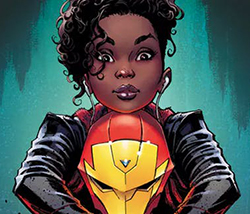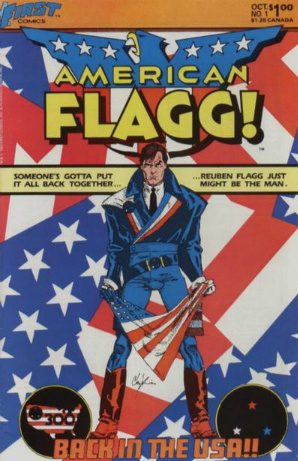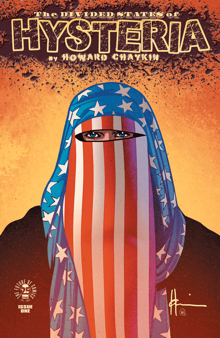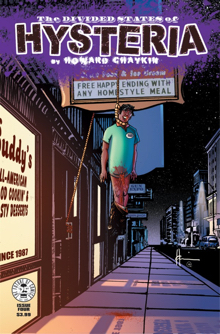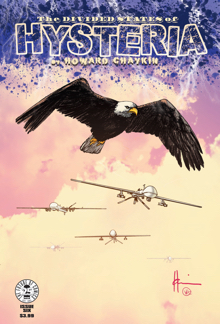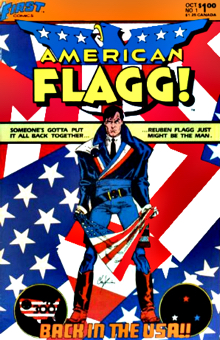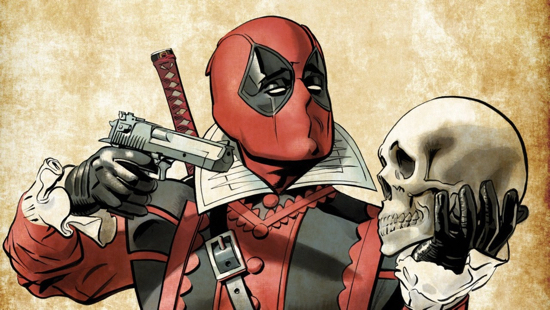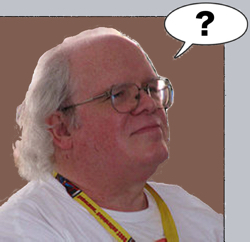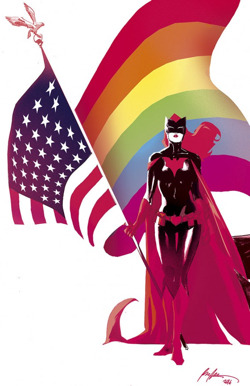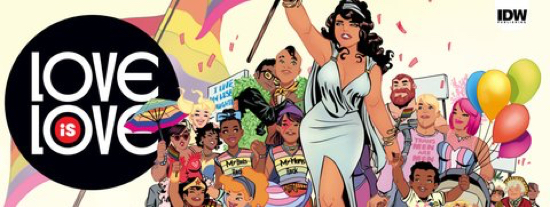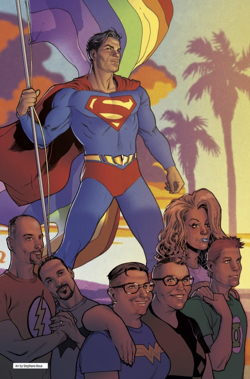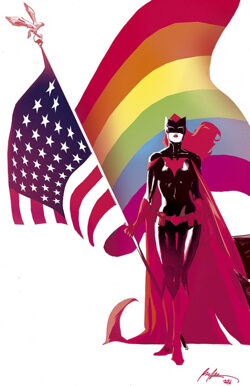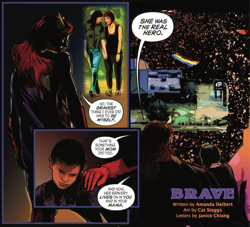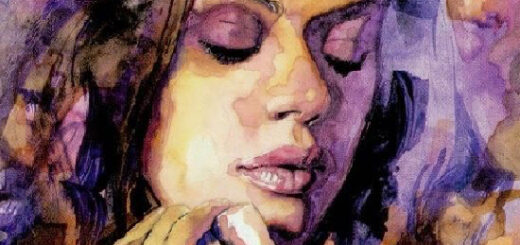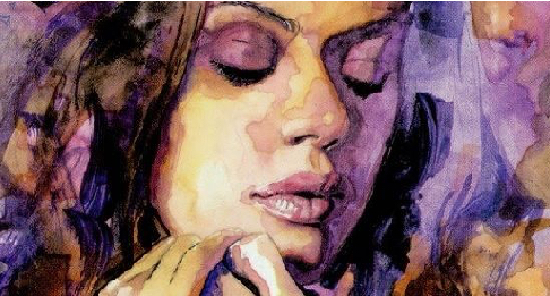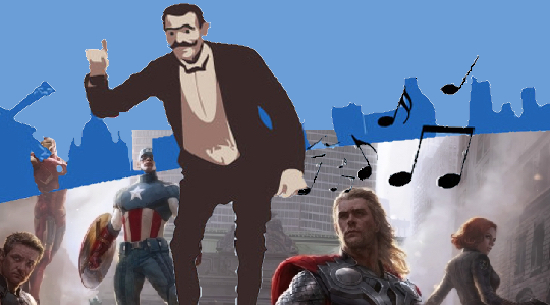The Return of the DC 100-PAGE GIANT!
If you’re of a certain generation, you remember the big summertime issues that your parents picked up for you on the way to whatever you were doing that required a long car ride to get there– comics that gave you new stories combined with older fare that brought you into a richer shared universe.
This summer, Walmart shoppers will get a chance to do that again as DC Entertainment announced today that a series of “giant” monthly comics will be sold exclusively in more than 3,000 participating Walmart stores around the country.
Available for $4.99, each 100-page anthology features all-new stories written exclusively for these books by some of DC’s top creative talents, including Tom King (BATMAN, MISTER MIRACLE, HEROES IN CRISIS), Dan Jurgens (ACTION COMICS, BATMAN BEYOND), Brian Michael Bendis (SUPERMAN, ACTION COMICS, THE MAN OF STEEL), Andy Kubert (NEW CHALLENGERS) and others. Each title will also include additional story arcs drawn from fan-favorite DC eras such as the New 52, Rebirth and the New Age of DC Heroes.
Each of the four titles – SUPERMAN GIANT, JUSTICE LEAGUE OF AMERICA GIANT, BATMAN GIANT and TEEN TITANS GIANT – will arrive in stores by July 1. Beginning in August, the Superman and Justice League of America titles will arrive in week one of each month, with the second pair, Batman and Teen Titans, arriving approximately two weeks later.
“We are extraordinarily excited about working with Walmart to expand the reach of our books,” said DC Publisher Dan DiDio. “These new monthly books combine new and accessible stories with reprints of classic comic series. It’s a great way for new readers to get into comics and follow the characters they’ve grown to love in TV and film.”
The debut title lineup includes:
SUPERMAN GIANT #1
SUPERMAN GIANT #1 features chapter one of the two-part “Endurance,” an original story written by Jimmy Palmiotti (HARLEY QUINN, ACTION COMICS) with art by Tom Derenick (HARLEY QUINN, CYBORG, BATMAN/SUPERMAN). TheDaily Planet sends Clark Kent to Tornado Alley to do a story on the area, but when the storm hits, it turns out that this mild-mannered reporter is more helpful as Superman.
The issue also includes:
THE TERRIFICS #1 (2018) – From this year’s New Age of Heroes and born of the events of DC’s hit series DARK NIGHTS: METAL. Mr. Terrific, Metamorpho, Plastic Man and Phantom Girl are a team of heroes bound together by fate and united by the spirit of exploration and discovery. Together these heroes plumb the depths of the fantastic to learn what it means to become family.
GREEN LANTERN #1 (2005) – Written by best-selling writer Geoff Johns with art by Ethan Van Sciver and Carlos Pacheco, this first chapter launches the fan-favorite three-part story “No Fear,” in which Hal Jordan makes his return to the DC Universe as the Green Lantern, casting the light of justice on the darkest corners of Space Sector 2814.
SUPERMAN/BATMAN #1 (2003) – The iconic fan-favorite story arc, “Public Enemies,” returns, courtesy of writer Jeph Loeb, with artists Ed McGuinness and Tim Sale. Batman and Superman unite when President Lex Luthor accuses the Man of Steel of a crime against humanity and assembles a top-secret team of powerhouse heroes to bring Superman in by any means necessary.
September’s SUPERMAN GIANT #3 features Eisner Award-winning writer Tom King’s first return to the Man of Steel since his poignant and heartfelt tribute story, “For Tomorrow,” in the pages of ACTION COMICS #1000. Together with DC Master Class artist Andy Kubert, this powerhouse team will take readers on a new 12-part adventure titled “Up in the Sky!” When a little girl is kidnapped and taken from Earth, Superman embarks on a galaxy-spanning mission to find the perpetrators…but has to decide what lengths he will go to in order to save one life!
TEEN TITANS GIANT #1
In this original six-part Teen Titans story by Dan Jurgens with art by Scot Eaton, Wayne Faucher and Jim Charalampidis, the Teen Titans’ pizza dinner is interrupted by the introduction of a new villain, the Disruptor. Teaming up with the Fearsome Five and working as an agent of H.I.V.E., he had one mission: kill the Teen Titans! The battle spills onto the streets of San Francisco, putting its citizens at risk, while H.I.V.E. uses this distraction to begin their plan for world conquest!
Additional issue #1 stories include:
SUPER SONS #1 (2017) – From DC’s smash-hit Rebirth event, writer Peter J. Tomasi and artist Jorge Jimenez reintroduce the sons of Superman and Batman, Jonathan Kent and Damian Wayne, in part one of “When I Grow Up.” As Robin, Damian’s more than ready to take his place at the heroes’ table and has zero plans to wait his turn. And he’s dragging Superman’s son along for the trip, whether Jon likes it or not!
SIDEWAYS #1 (2018) – Also from the New Age of Heroes, this story written by Dan DiDio with art by Kenneth Rocafort introduces fans to high schooler Derek James who, during the events of DARK NIGHTS: METAL, has acquired powers from the Dark Multiverse and stepped into the role of superhero! But when cracks begin to appear in the space-time continuum, he soon learns that with that much power comes even greater liability!
TEEN TITANS #1 (2003) – Written by best-selling author Geoff Johns with art by Mike McKone. Cyborg, Raven, Starfire and Beast Boy welcome in a new roster of young heroes to train to defend humanity—Wonder Girl, Impulse and a Superboy who’s been cloned from Superman’s DNA!
BATMAN GIANT #1
Batman is on the case of a missing girl in “One More Chance,” an all-new story by writer Jimmy Palmiotti and artist Patrick “Patch” Zircher. Batman is the world’s greatest detective, but what happens when the trail in his newest case leads him back to a place from his past that he never expected to revisit?
BATMAN GIANT #1 also includes:
BATMAN #608 (2002) – Written by Jeph Loeb with art by comics icon Jim Lee, issue #608 kicks off “Batman: Hush,” one of the most popular storylines in the Dark Knight’s fabled history. When Batman sets out to unmask the mystery character wreaking havoc in his life, he teams up with an unexpected ally (Catwoman) and finds himself facing off against not only his deadliest foes, but some of the toughest characters in the DC Universe, including Poison Ivy, Killer Croc and even Superman!
NIGHTWING #1 (2011) – From DC’s New 52, this story by writer Kyle Higgins and artist Eddy Barrows debuted a new look for Dick Grayson as he dives into a tale of murder, mystery and superhuman evil against the backdrop of Haley’s Circus, the place that started him on his path from acrobat to orphan to sidekick and ultimately superhero!
HARLEY QUINN #1 (2011) – Also from the New 52, writer Jimmy Palmiotti and artist Amanda Conner break Harley Quinn out of The Joker’s shadow with all the force of a giant mallet!
Beginning with BATMAN GIANT #3 in September, superstar writer Brian Michael Bendis makes his DC debut on the Dark Knight with a 12-part story, “Universe.” Batman’s run-in with the Riddler leads the Caped Crusader into a mystery that spans the globe!
JUSTICE LEAGUE OF AMERICA GIANT #1
Justice League member Wonder Woman is spotlighted in “The Conversion,” an all-new story from NIGHTWING writer Tim Seeley and artists Rick Leonardi and Steve Buccellato. In this single-issue story, Wonder Woman comes face to face with Ares, god of war—who sees her as a promising new recruit!
JUSTICE LEAGUE GIANT #1 also includes:
JUSTICE LEAGUE #1 (2011) – From the incomparable team of writer Geoff Johns and artist Jim Lee comes this version of the League from the New 52. In this alternative spin on the union of Superman, Wonder Woman, Green Lantern, the Flash, Aquaman and Cyborg, superheroes are a strange and new phenomenon. The mysterious Batman discovers a dark evil that requires him to unite these reluctant heroes to protect Earth from a cosmic-level threat!
THE FLASH #1 (2011) – In this New 52 version of the Fastest Man Alive, writer Brian Buccellato and artist Francis Manapul introduce Barry Allen to a villain who not only can be everywhere at once, but is also a close friend of the Scarlet Speedster!
AQUAMAN #1 (2011) – Award-winning writer Geoff Johns and dynamic artist Ivan Reis team up on this story from the New 52! Aquaman has given up the throne of Atlantis, but the sea still has plans for Arthur Curry as a broken race of undersea creatures, the Trench, emerges from the ocean depths, bent on destroying the surface world!
In issue #2, Seeley teams up with artists Felipe Watanabe and Chris Sotomayor on “Mother’s Day,” a stand-alone story where Wonder Woman returns to Paradise Island for the first time since her exile, only to find that the Amazons – and Queen Hippolyta – have been abducted by Echidna, the mythological Mother of Monsters, with a brood of unstoppable beasts as children!
Issue #3 begins another original 12-part Wonder Woman story by HARLEY QUINN co-writers Amanda Conner and Jimmy Palmiotti called “Come Back to Me.” When Steve Trevor’s plane crashes on an island outside of time itself, it’s up to Wonder Woman to rescue him from this mysterious land, full of monsters, dinosaurs and some very surprising citizens.

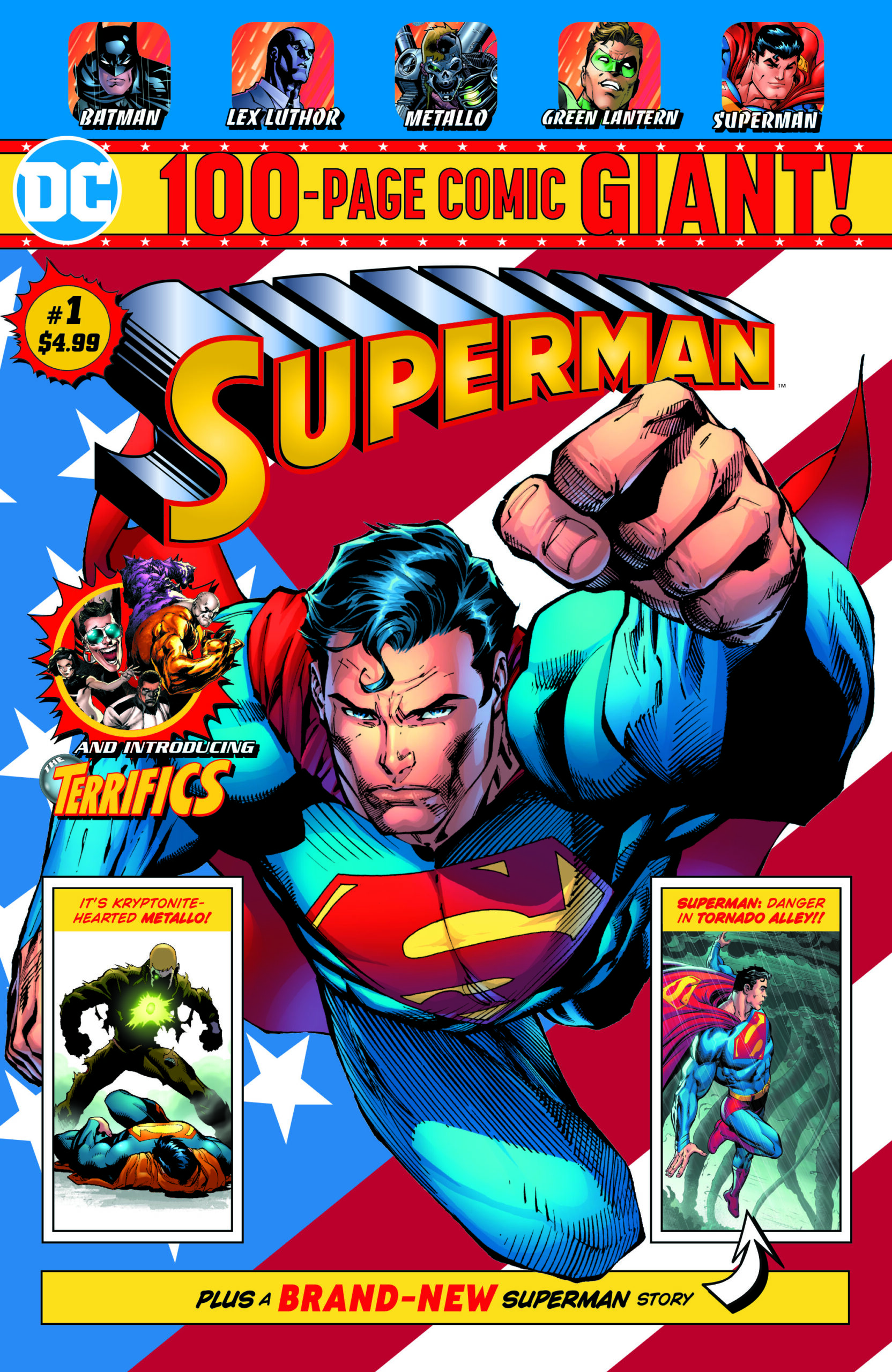
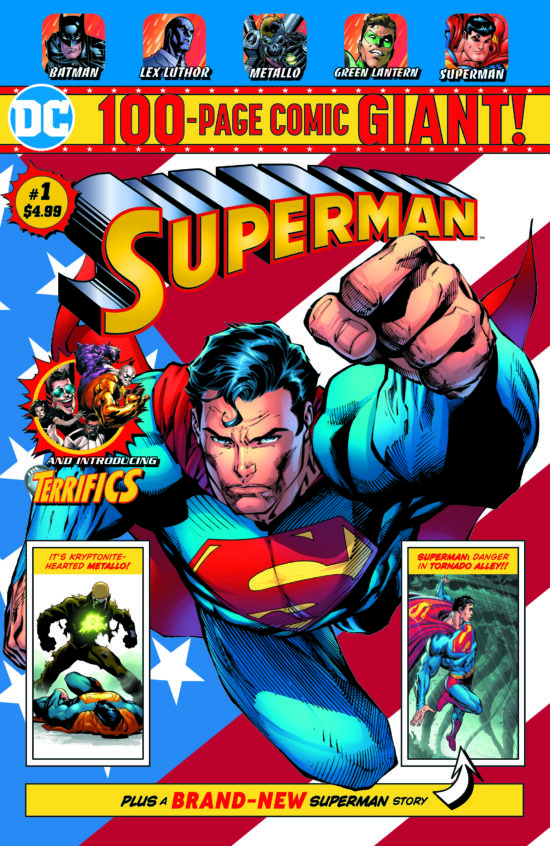



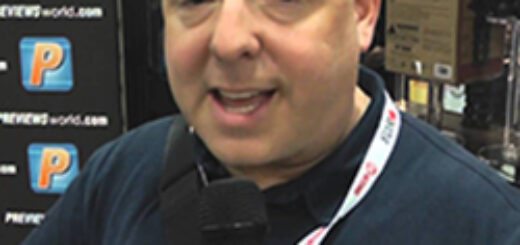
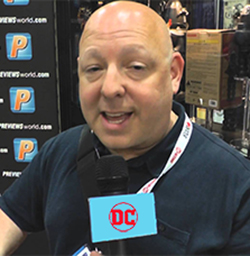 Can you feel it in the air, kiddos? Whether it’s our President’s RussiaGate investigation picking off staff members and placing others under house arrest, or the massive movement of that other three-named comic book creator being snagged by their rival comic company. The times? They are a’changin.’
Can you feel it in the air, kiddos? Whether it’s our President’s RussiaGate investigation picking off staff members and placing others under house arrest, or the massive movement of that other three-named comic book creator being snagged by their rival comic company. The times? They are a’changin.’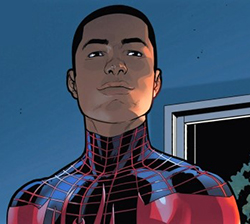 In 2000, which I’ll be double-damned was seventeen friggin’ years ago, BMB was brought in on a little experimental book Ultimate Spider-Man. The proto-millennial Peter Parker of Bendis’s pen was what a generation needed from their comics. He was young, unencumbered by decades of backstory, and full of delicious teen angst. Paired with the artwork of stalwart journeyman Mark Bagley, the book skyrocketed Bendis’s name-value into the upper echelons of the modern comic book fandom. And over the course of his career at the house funded by the Mouse, Bendis had amazing runs on Daredevil, The Avengers, Alias, and the X-Men. But you have access to Wikipedia too, so, let’s just call it a day with the basics, shall we?
In 2000, which I’ll be double-damned was seventeen friggin’ years ago, BMB was brought in on a little experimental book Ultimate Spider-Man. The proto-millennial Peter Parker of Bendis’s pen was what a generation needed from their comics. He was young, unencumbered by decades of backstory, and full of delicious teen angst. Paired with the artwork of stalwart journeyman Mark Bagley, the book skyrocketed Bendis’s name-value into the upper echelons of the modern comic book fandom. And over the course of his career at the house funded by the Mouse, Bendis had amazing runs on Daredevil, The Avengers, Alias, and the X-Men. But you have access to Wikipedia too, so, let’s just call it a day with the basics, shall we?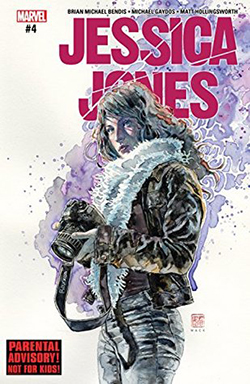 While some would be quick to point out that BMB’s clout may not be at the same levels it once was, anyone with a Facebook feed like mine when the announcement dropped surely could argue otherwise. Every comic book fan and creator I know had something to say on the matter. Most all of it was purely positive – save literally for that one friend who literally can’t say they like anything, ever. But, pardon my French, fuck that guy.
While some would be quick to point out that BMB’s clout may not be at the same levels it once was, anyone with a Facebook feed like mine when the announcement dropped surely could argue otherwise. Every comic book fan and creator I know had something to say on the matter. Most all of it was purely positive – save literally for that one friend who literally can’t say they like anything, ever. But, pardon my French, fuck that guy.